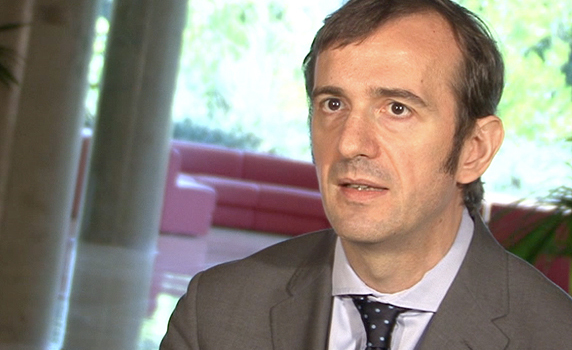
“We’re sitting on a mountain of data that we’re not using”. This was the view taken by Javier Zamora, scientific collaborator on IT with IESE, on the current situation regarding the vast amount of information produced by social networks and mobile devices which transmit a huge volume of data.
Most of us are not aware of the fact that a mobile phone combines up to four different types of networks, each of which can transmit information that could be tremendously useful to anyone who can use and manage it with skill. There are proximity networks (Bluetooth), call networks (3G or 4G), localization networks (GPS) and of course various social networks such as Twitter, Facebook and LinkedIn. Analyzing and cross-referencing all this data allows us to establish a complete picture of a person’s habits, customs, likes and phobias.
Business’ ability to exploit this data on a grand scale is still at an incipient stage. Evidently, its advance will be conditioned by ownership, privacy and security issues when it comes to using such sensitive material. As Javier Zamora explained in a Continuous Education session organized by the Alumni Association, “this is year zero of Big Data.” But the data revolution has already begun. Its impact is being compared to the impact the microscope had on science and medicine in its day. It’s here to stay.
Describe, predict, prescribe
New technologies are like a magnifying glass that can capture the detail that this data (which has always been there) now offers us in a totally new way: processed and de-aggregated at a level of detail never seen before. Managing tons of data is no longer a problem. Today the question is how to transform gigabytes into decisions that add value to business.
But how can companies make the most of big data? Zamora gave the example of applications such as Google maps and GPS which aggregate information to fix our position in real time and a specific place. This type of solution not only allows us to describe in real time the state of traffic on a particular road but also predict rush hours and the routes with the most congestion. This information at the same time serves as the basis for prescriptive applications, warning users about the risk of traffic jams and suggesting alternative routes.
Many companies have already taken the first steps to extract value from the information that they generate. In the case of General Electric, it has introduced what it calls the industrial Internet. What this means is that they are equipping appliances and apparatus that they manufacture (from refrigerators to airplanes) with sensors which allow them to monitor the machine’s performance, prevent breakdowns and inefficiencies and, ultimately, develop solutions to optimize their productivity and efficiency.
Informed skeptics
Despite the enormous impact the generalized use of big data is expected to have, Javier Zamora wanted to make it clear that it is not a technology that will replace the knowledge, experience or even the intuition of those professionals who work directly with the information in its crude form, whether they be researchers, doctors, analysts, executives or managers. Big data doesn’t substitute, it complements. Among other reasons there is the risk of confusing correlation (for example, the correlation between the number of Google searches related to flu and the real incidence of the virus in population) with causality (associating the Google search for the word flu with the greater predisposition to suffer from it). In this regard, Zamora recommended adopting an attitude of “the informed skeptic,” something between intuitive and analytic thought.
For those who don’t want to miss out on the next industrial revolution, IESE is organizing the 1st international conference “From Big Data to Smart Decisions”, which will be held in Warsaw on March 20, 2014.